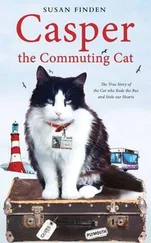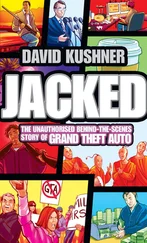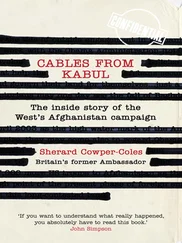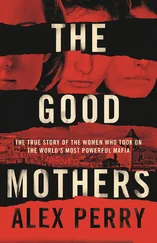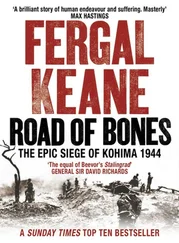In fact, by most standards, Ellison had become an excellent helmsman. He had been coached by some of the world’s best teachers, and his personality was well matched to the job. He was rarely intimidated, and he handled chaos better than most people did. Even Dickson had confidence in his boss’s skill—or as much confidence as Dickson had in anyone but himself.
ROB KOTHE’S ALARM clock sounded at 3:30 A.M. on Saturday morning. The owner of the Sword of Orion began the day by filling a mug with his favorite drink, Sustagen, a vitamin-fortified chocolate mix, into which he sprinkled a teaspoon of ground coffee beans. Walking into his study, he logged on to his computer and called up data from the same global weather models Kenn Batt and Brett Gage were studying. Kothe had been doing the same thing every day for several weeks, and with good reason: in ocean racing, judgments about where the winds and currents are strongest are pivotal.
A tall and gangly fifty-four-year-old, Kothe didn’t have much hair on the top of his head, although he did have a broad snow-white mustache and a goatee, which extended out over a long, pointy chin. He was relatively new to sailing. He had bought his first boat in 1997—the year he raced his first Hobart—but he believed he could make up for his lack of experience with the same sort of relentless striving that had made him a successful entrepreneur. Understanding the weather was the area where he believed he could make the biggest contribution to his crew’s race, and he spent the next three hours comparing the models, printing out charts and data while straining the largest of the coffee particles from his drink through his teeth.
It was obvious that he hadn’t been sailing for long. When he tried to pass himself off as an old salt, splicing nautical terms into the conversation, he ended up sounding more like a newcomer who was trying a bit too hard. The overall impression was that of a mad professor, and for that reason many CYC members called him Kooky Owner, or simply K.O. Some, in fact, had never heard his real name. For a while he tried to get the young men he recruited for his crew to stop using the name; later, he sought, again unsuccessfully, to alter the meaning by signing e-mails as “Kompetitive Owner.” The Sword ’s crew eventually shortened the name to Kooky.
Kooky had an abiding hunger for the kind of glory that winning the Hobart could bring. “I was the smallest kid in school until I was nine, and I felt bad about that,” he said more than four decades later. “It gave me a point to prove.” He grew up in Eden, a port city south of Sydney where his father worked as an accountant for many of the fishing fleets based there. Although he didn’t sail as a child, Kooky spent a lot of time hanging around the docks and he remembered following the Hobart races. Two days before the 1954 race, when Kooky was eight, his parents gave him a new radio. “I listened to the whole race. Back then I could recite the names of everyone who had won.”
Kooky had been deeply committed to adding his name to that list ever since.
Kooky was fundamentally different from other skippers. Whereas most of them had been sailing for many years, he hoped to go from novice to Hobart winner almost immediately. And although sailing is a team sport, Kooky, who knew less about sailing than everyone else on his crew, wasn’t a natural leader. A true entrepreneur, most of his achievements had come from individual pursuits rather than group efforts, and his drive wasn’t matched by a talent for managing others. For example, after he hired Darren Senogles, a twenty-eight-year-old sailor known as Dags, to take care of the boat, Kooky called him so frequently that Dags told him, “If you keep calling me, I’ll never have a chance to get anything done.”
When he recruited his crew, Kooky didn’t mislead anyone about his sailing credentials. Instead, he talked about how he had flown gliders in airborne regattas over Australian deserts when he was working as a pharmacist near Canberra in the 1970s. “In gliding, you figure out what the wind is doing, and you win by learning how to take advantage of it, just like in sailing,” he said. “It’s the solo version of the same thing.” He also described gliding as an extremely competitive sport, recalling that one of his friends had been killed in a collision and claiming that midair contact sometimes left planes with tire marks on their wings.
Since those pharmacist days, Kooky’s career had evolved through a sequence of oddly logical stages. Pharmacology got him involved in animal tranquilizers, which led to tranquilizer guns. His understanding of the propulsion component inspired him to manufacture lifeline-throwing guns, which he profitably supplied to navies and merchant fleets around the world. After going through a divorce in 1992, Kooky decided his businesses were doing well enough that he could finally find the time to pursue the Hobart. For a couple of years, he crewed on other people’s boats, but since his dream had everything to do with winning the race on his own yacht, he soon bought a forty-foot sloop and joined the CYC.
Before the 1997 Hobart, he told his crew—which included Dags—that he would buy a better boat if they did well. They did, and the day after they finished the race, Kooky, always an early riser, began stalking the docks to shop for a new boat at 5:00 A.M. Before the morning was over, he had decided to buy Brighton Star for $220,000. It had originally been launched as the Sword of Orion , and Kooky decided to restore its former name.
The Sword ’s shape was very different from that of classic sailing yachts. Its bow dropped straight down from the deck to the water. The back half of the boat was strikingly broad, creating a large cockpit area eight feet across. A seven-foot-diameter steering wheel extended from one side to the other, enabling helmsmen to have the broadest possible perspective. Like Sayonara and most of the fastest racing yachts, the hull was composed of strong but lightweight skins on the inside and outside, surrounding an interior of foam. The Sword ’s skins were made of Kevlar, a synthetic material so strong that it’s used to make bulletproof vests.
Kooky went to fairly extreme measures to improve the boat and its crew. The Sword came with a handsome barometer, which was housed in a brass case; Kooky replaced it with a plastic one to eliminate a couple of pounds of weight. He had hinges moved from one side of the cabinet doors to the other because he thought shifting the weight of the hinges toward the front of the boat might improve the yacht’s handicap rating. If something broke in a race, he was pleased: “Now we can get a better one” was his usual reaction.
Beyond a demanding racing schedule—at least two races and one practice sail every week, sometimes with a professional sailing coach on board—Kooky used e-mails to badger the crew to be on the boat on time and even to exercise more and lose weight. “I’ve been looking closely at crew commitment,” he wrote in an all-crew message a month before the Hobart. “If you want to be on the Hobart boat, this is the commitment needed: 1) You will need to be available for all races from this weekend. No weekends off. Not for discussion. However, there will be a maximum of two midweek practice sessions, possibly only one. 2) Fitness. If you are not already, start running or go to the gym. Cut the alcohol and eat better. Lard is a penalty. 3) Smoking. Last weekend I saw cigarette ash land on sails and I suffered a coughing fit from cigarette smoke. There will be no smoking during short races, from the ten-minute gun. Before and between races, smoking sites will be per long races. In long races, there will be no smoking upwind, ahead of the traveler. In long races, there will be no smoking downwind, behind the cockpit. If you are not able to meet these conditions tell me now while you still have time to find a place on another boat going south.”
Читать дальше



